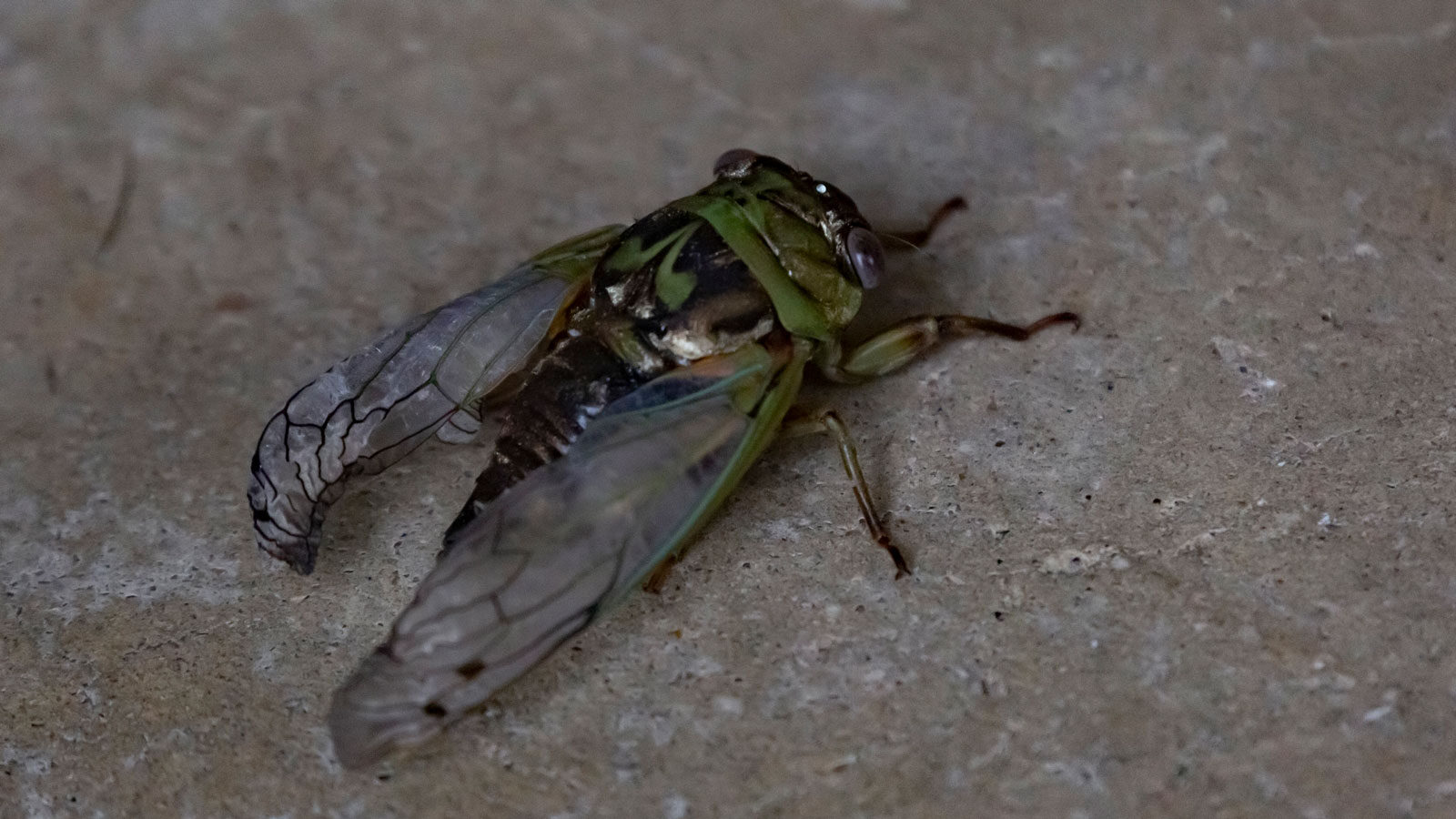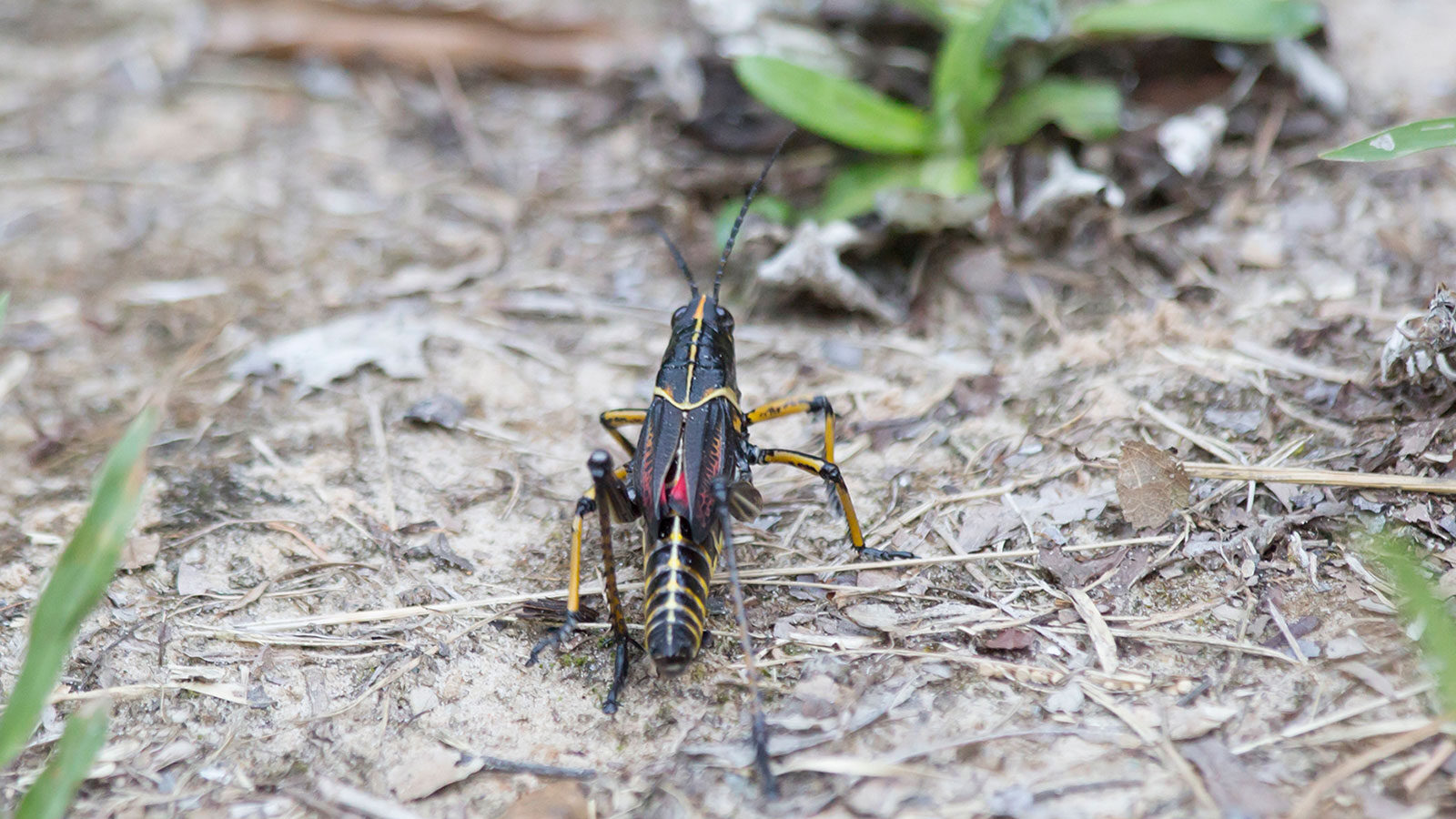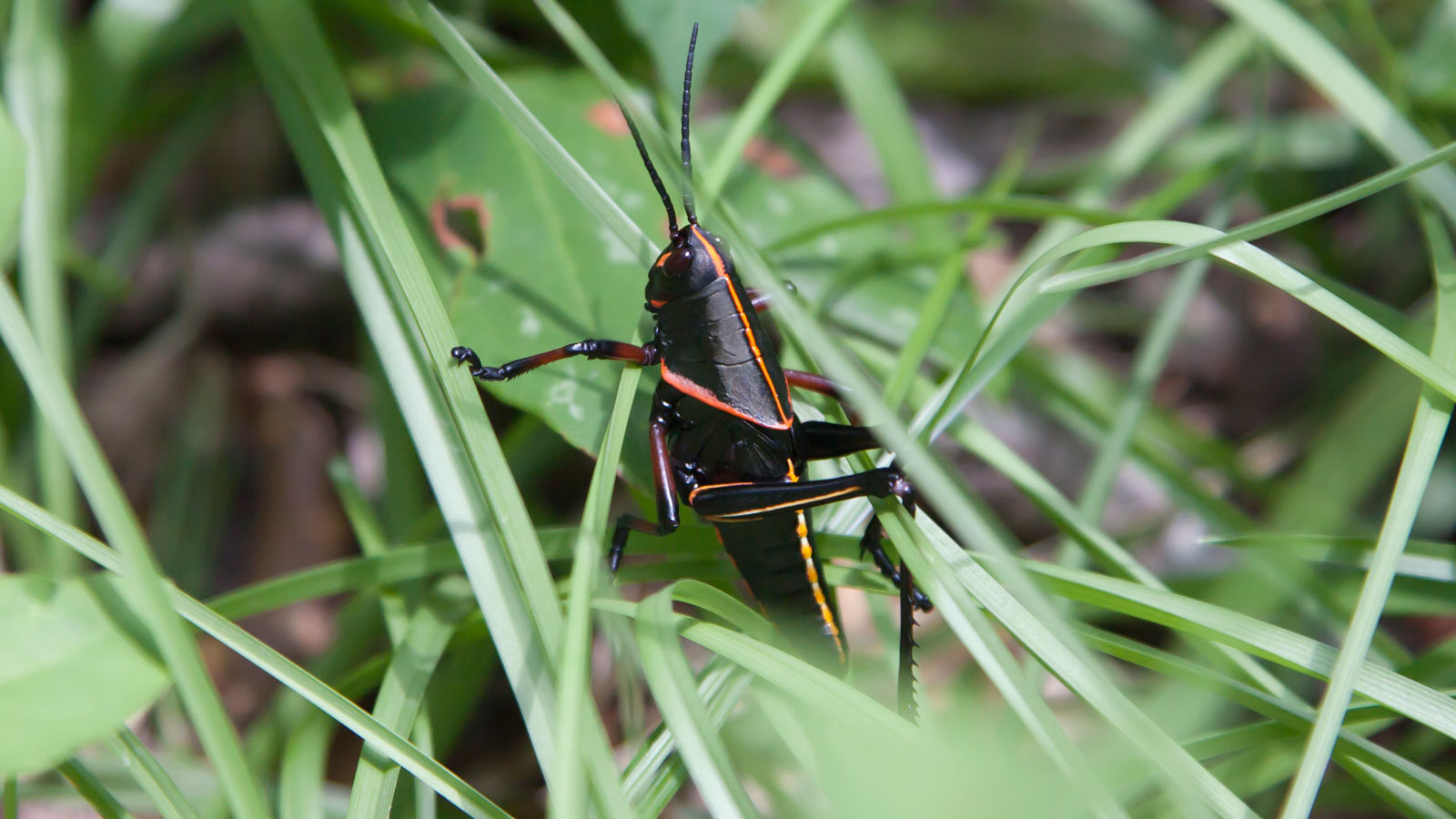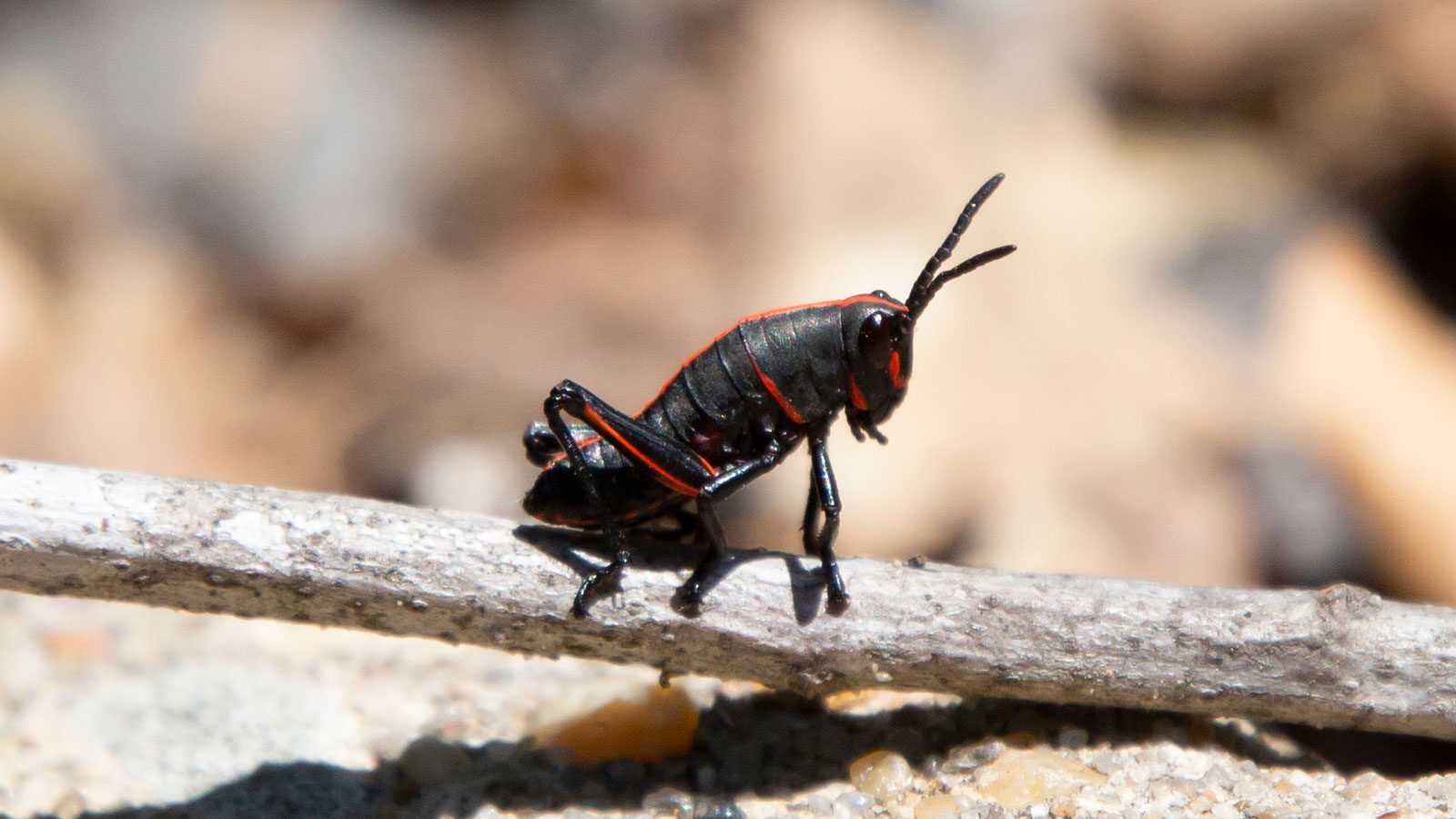Eastern Lubber Grasshoppers
at
a Glance
Key Features:
Eastern lubber grasshoppers are yellow with black markings on their legs, bodies, and heads..
Habitat:
Forests, fields, swamps, and yards
nesting habits:
Female eastern lubber grasshoppers lay three to five clusters of 30 to 50 eggs in a hole before the temperature drops for winter.
Diet:
Alfalfa, barley, clover, corn, cotton, grass, oats, rye, shrubbery, weeds, and wheat
hunting Behavior:
Eastern lubber grasshoppers damage crops by eating all the leaves off of them.
Commonly Confused With:
Cicadas, Locusts, and Praying Mantises

Eastern lubber grasshoppers are often confused with cicadas because both have black markings on their bodies. Eastern lubber grasshoppers are yellow and have long hind legs. Cicadas are brown or green.


